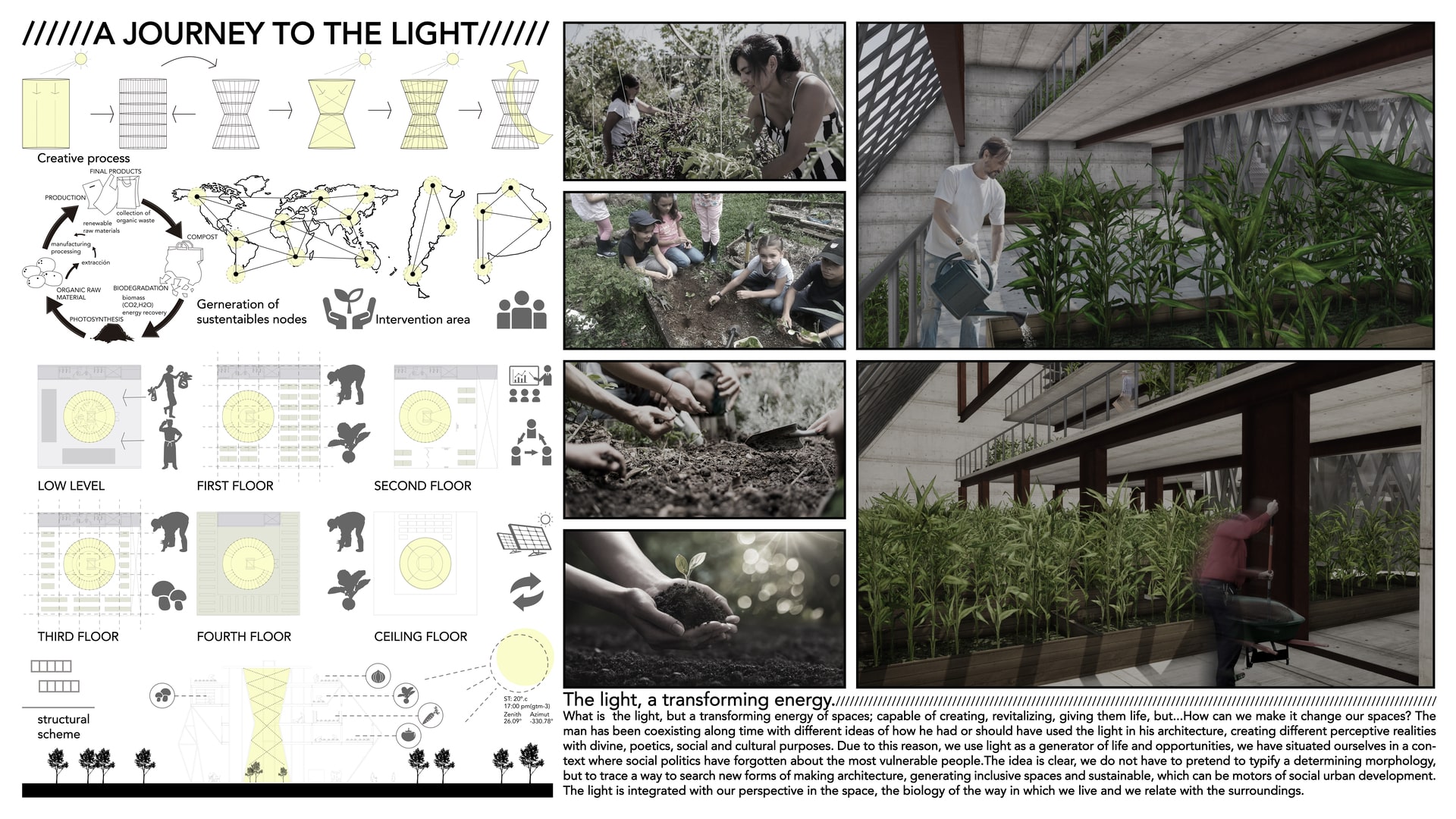Project Description
A journey to the light This project emerges from a diversity of questioning, those come from the social, cultural and economic study and from nowadays ways of living. How do we live? What changes are being produced in the world?, How are we going to live in the near future? What kind of society do we compose? What happens with the vulnerable sectors? What problems take the unsustainable ecological densification? In order to give answer to these uncertainties we should ask ourselves.How can we use the light? The daylight is our source of natural energy, able to renew us physically and spiritually, these features are the base of an idea that looks for generating new sustainable spaces, that can live in harmony with the light and its immediate surrounding. This building is composed from a principal element, that is looking for introducing the light and the external air to the inside of it. It is studied different morphologies generated by a principal concept, the Venturi effect, approximating to a similar geometry to a hyperbolic paraboloid that allows the channeling of light and air from one point to another, which favours the natural biological growing of organic vegetable gardens. In the less illuminated areas is proposed the growing of edible fungi, because they do not require a greater luminosity. The compost is also important under this requirements of light, due to the fact that it is a process in which the organic material is transformed from the residual to obtain the compost; it is a natural fertiliser for the soils and destined for the cultives. In the process of compost and the organic vegetable gardens contribute to the sustainability of the environment. The building is thought as the engine of social development in the most vulnerables zones and with less resources. At the same time it is planned recreational activities for the youngest inhabitants, it also contains interdisciplinar tour, transmitting social consciousness to the future generations. Through occasional exposure to the open plan and eventual commercial fair to the sale of organic products ,produced by entrepreneurs, it aims to promote economic and cultural development. Apart from that, there are areas of training for the different activities which take place in the building. The architecture is not an aesthetic figure, but it is the way in which we live and relate to each other. The creation of spaces should not be taken for granted; that is the reason why contemplate the initiative of implementing the Velux technologies to use the light in the architecture of our building. We have the opportunity of building new ways of living, coexisting and working, in a context of a developing society, being the light our principal natural resource of biologic development.
